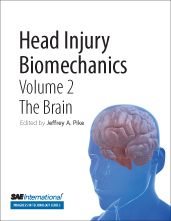Book

Lumbar Injury Biomechanics
2013-08-01
The amount of load that can be borne by the different components of the lumbar region is fairly well understood, as are resulting injuries from overloading. Less severe lumbar injuries involve a wide range of factors, including: heredity, obesity, age, occupation, sports, cardiovascular risk factors, and depression. Some of the most painful conditions that require high levels of care involve lumbar spine fracture or soft tissue injury from falls, contact sports, vehicle collisions, aircraft ejection, and underbody blasts from roadway explosions (military injuries). Each of these injury scenarios elicits a different kinematic response of the spine as a result of load direction, magnitude, and duration. Updated from a popular earlier volume, this new compendium includes landmark papers from 1994 through 2013 that focus exclusively on lumbar injuries.





